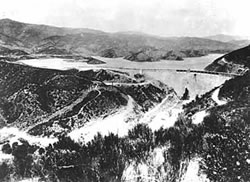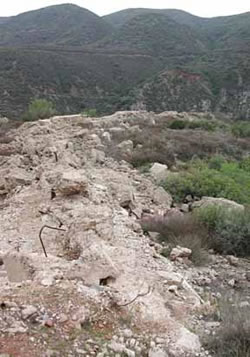BUSINESS
Inside SCV History
Man-made Destruction and Stock Market Crash Hit the Valley Hard
June, 2006 - Issue #20
 |
Atholl McBean joined the Newhall Company in 1929, nearly two months to the day before the stock market crash that would cut the bottom out from under not only the Newhall Company but most of America's businesses and industries. His marriage to Margaret Newhall, a granddaughter of Henry (daughter of William), brought Atholl into the family business. After several successful ventures in San Francisco, Atholl had built quite a reputation as a prominent and reputable capitalist. He brought this leadership, innovation and experience to the Santa Clara Valley.
Setting first to rectify the financial instability of the Newhall Company, McBean brought in an outside auditor, much to the dismay of the stockholders. No illegalities were ever alleged or found, but the accounting of the company's finances had changed little since its founding despite vast reforms in accounting practices and financial monitoring. Cash transactions were simply shown as withdrawals or deposits, not categorized by accounts or source. There was simply no way to tell how much money was being lost on cattle, which had dropped to less than a dime a head, or if the hundreds of acres of recently planted citrus trees were bringing in additional revenue.
 |
James Finch was a young transplant from Utah who had worked his way through college. After a brief stint in San Francisco, he had taken the recommendation of one of his professors and met with Atholl to try his hand at real management.
The first jobs given to James upon his arrival were certainly not the most glorious. He collected debts or threatened eviction from the various renters around the valley while ending the farm's lengthy relationship with sharecroppers who had long provided the vast majority of the crops from the region. As James proved himself, he gained the respect and admiration of Atholl and the Newhall Company board. By 1933, the Company was again turning a profit, even while the rest of the nation remained in the grips of the Great Depression. The next decade would set the course toward the Santa Clarita Valley that we all know today.
--------------------------------------------------------------
Much of the research for this article came from "A California Legend: The Newhall Land and Farming Company," by Ruth Waldo Newhall. Photos courtesy of Santa Clarita Valley Historical Society/SCVHISTORY.COM.
|
||||||||||||||||||||||||||||





